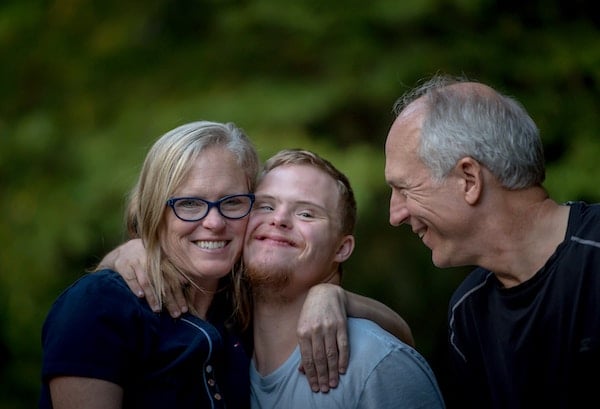Published on
Building Intercultural Competence: New Approaches for Intergenerational Learning

“I think there was a bit of a disconnect with the varying ages of people in this course. It felt that a lot of the older people felt entitled to a certain amount of time every week to talk about the way they’ve “been doing things for years.” Then they would talk about specific incidents in the past that would then take time away from the lecture. It was frustrating. They were here to learn a new skill and how to do something the right way, not rehash old arguments or bring back up ancient things that they worked on previously.”
As the above quote (from a student in a University of Washington professional certificate program) demonstrates, continuing education classes are becoming more complex, especially in regards to the age of the students we serve.
The Online College Students 2019 report states that about half of the online college students are millennials, about one-third are Generation X, and the remainder are baby boomers and Generation Z. A growing number of older learners are returning to higher education to finish degrees or upgrade their skills in order to stay competitive for longer and more varied careers. Recent high school and college graduates believe that degree inflation means they need additional credentials to compete for positions that previously required less education. With more flexible educational formats and a growing demand for lifelong learning, it’s no wonder that we are seeing changes in our student populations. As administrators, faculty, curriculum and/or program designers, it’s vital that we gain a greater understanding of strategies to help avoid culture clashes between the increasingly diverse groups of learners in our programs.
Recent studies have defined and named different generations according to the context of the world events, technologies and trends of their childhoods: traditionalists, baby boomers, Gen X, millennials (Generation Y), Gen Z and the newest, Generation Alpha (those born after 2010). Drawing from the field of cross-cultural studies, these groups can be compared and contrasted by their shared traits and belief systems. While there are many elements that form one’s identity: socio-economic status, race, gender, religion, ethnicity, education, etc., a cross-cultural approach to age diversity can be useful in helping to understand some generationally-specific attitudes and motivations. It may assist administrators and program designers to consider marketing, designing or adapting program formats and policies for different age groups. It may also provide a foundation from which students can build shared understanding of common traits of different generational groups in their classes and workplaces.
Building Inclusive Learning Communities
To build inclusive learning communities, it’s critical to design opportunities for students and instructors to reflect on their own bias and belief systems and examine perspectives outside their own. As Lee Ferrell states, “Multigenerational simply refers to a composition—people from different generations are present. Intergenerational refers to an active exchange or connection between and among the generations, and this is where teachers have a great opportunity to enrich the learning environment.”
Continuing education programs can intentionally build opportunities for all students to learn about, from and with each other to elevate commonalities rather than differences. Two approaches that can guide this work to bridge generation gaps and develop intergenerational learning communities are intercultural competence and culturally responsive pedagogy.
“Intercultural competence is the ability to develop targeted knowledge, skills and attitudes that lead to visible behavior and communication that are both effective and appropriate in intercultural interactions.” (Deardorff, D. K., 2006)
Intercultural competence frameworks such as the Intercultural Competence Value Rubric from AACU, presents a continuum of increasing competence in six main areas: knowledge of what culture is; the rules and bias of cultural groups; empathy; intercultural experiences; judgment; and worldview. This rubric is largely based on Michael Bennett’s Developmental Model of Intercultural Sensitivity. The ultimate goal of intercultural competence is to support the development of flexible, open, adaptable, curious and empathetic individuals who build strong communities. Intercultural communities go beyond simply tolerating difference to co-existing in mutuality, reciprocity and equality. Programs can utilize these frameworks to develop integrated learning opportunities that promote intercultural learning in multigenerational classes.
Culturally responsive pedagogy is described by Rhodes and Schmidt (2018) as “an asset pedagogy designed to increase motivation by replacing mainstream teaching practices with those grounded in students’ experiences and ways of knowing.” A culturally responsive pedagogical approach ensures that we include the experiences and ideas of all learners in the process, not just those of the dominant culture, or generation. Strategies attributed to culturally responsive teaching include:
- Establishing inclusion– creating guidelines for interactions, building a foundation of respect and connections among learners, and providing clear expectations and understanding learners’ goals and motivations.
- Developing attitude– building on learners’ prior knowledge, infusing a variety of perspectives, and allowing learners to have choices, and take charge of their learning and interact in meaningful ways with other learners.
- Enhancing meaning– helping learners understand the purpose and utility of the learning, using problem-based, authentic learning tasks, simulations and case studies that bring in learners’ experiences and backgrounds and foster critical inquiry and reflection.
- Engendering competence– using effective assessment tools contextualized in the learners’ experiences and demonstrate mastery in a variety of ways.
A culturally sensitive pedagogical approach much like Universal Design for Learning, can ensure that our continuing education programs have built-in spaces to include all learners’ voices and perspectives.
Moving Toward the Future
Lifelong learning is poised to fill growing societal, business and industry needs for an increasingly wider demography of learners. It is time for us to move beyond generalities such as “baby boomers aren’t comfortable with technology” and “millennials must be entertained while they learn” to develop a post-generational mindset: one that acknowledges the complexity of cultural identity and includes age as an important element. We should intentionally create opportunities for learners to develop greater intercultural competence. Efforts to build more inclusive learning communities can only serve to better equip our learners with the skills, knowledge and dispositions to be more successful in the increasingly diverse and multigenerational workplaces of the future.
Author Perspective: Administrator


